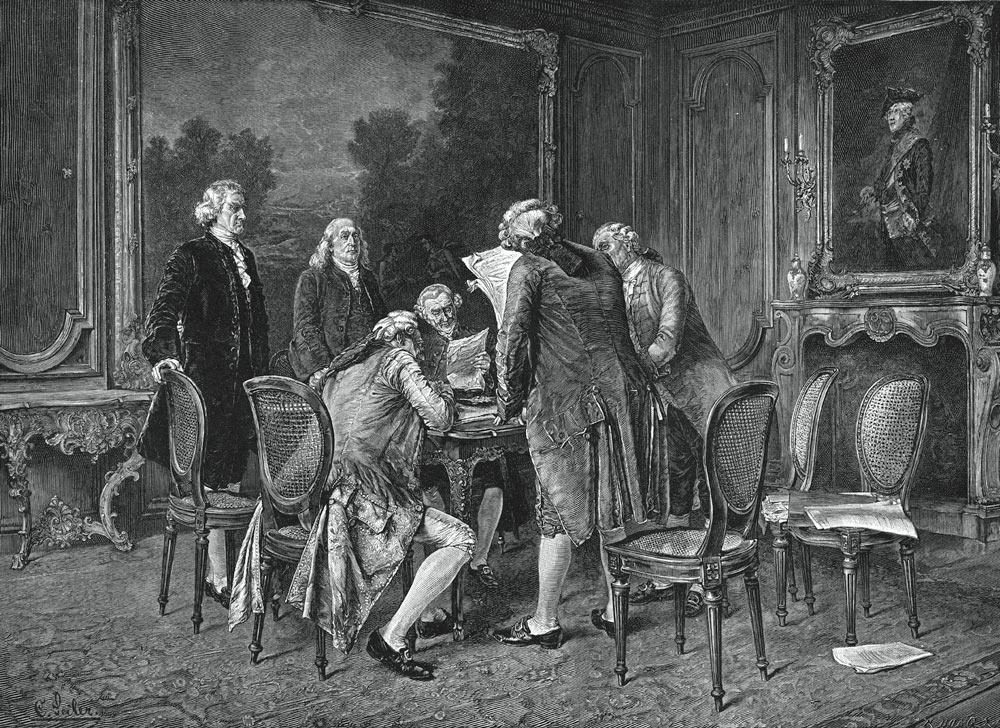It took two long years to get from Yorktown to the signing of the Treaty of Paris. After their defeat at Yorktown, the British still had 30,000 British soldiers in North America and the British held all the major American ports except for Boston and Philadelphia. But, after six long years of fighting a costly war, the British will to fight had been sapped. On December 20, 1781, Parliament passed a resolution to make peace with the United States. Despite the resolution, the war would continue until the Treaty of Paris was signed.
In South Carolina, General Nathanael Greene and the Continental Army continued to fight the British and Loyalist soldiers. Gradually the territory controlled by the British contracted until all of the Loyalists in the south retreated to Charleston and Savannah. Thousands of Loyalists sailed from these two cities to Great Britain or to Canada.
Another place the war continued was the frontier of Ohio and Kentucky, where the British incited Native Americans to attack forts and settlements. In retaliation the militia in the area murdered all the Native Americans they could. The fight in Ohio and Kentucky continued to be fierce and bloody through the War of 1812 (the second War for Independence).
In the meantime, four Americans had sailed to Paris to work on negotiating a peace with Great Britain and France. Benjamin Franklin, John Adams, John Jay, and Henry Laurens worked tirelessly with the peevish French and resentful British delegates. On November 30, 1782, they signed a provisional treaty, pending ratification of the governments. But it would take another 10 months for Great Britain and France to reach a similar accord.
Finally, on September 3, 1783, the Treaty of Paris, approved by all three governments, was signed. Great Britain recognized the independence of the United States and acknowledged its boundaries: excluding Canada, the boundaries extended westward through the Great Lakes to the Mississippi River, southward to the 31st parallel, and east to the Atlantic Ocean. In addition, the United States would have fishing rights off Newfoundland and Nova Scotia, legal debts would be honored by each country, all remaining British troops would leave the United States, and the Mississippi River would be open to navigation by the United States and Great Britain.
One of the sticky points of the Treaty of Paris was the rights of the Loyalists in the United States. Great Britain wanted their rights and property protected. The United States wanted to confiscate all their property. In the end, a compromise of sorts was reached. The Loyalists could keep their land if they paid a penalty – a tax – on those lands. Those Loyalists who had been most active in working against the United States were put on trial for war crimes and treason. Some were killed and some were banished. Many – close to 100,000 – chose to leave the areas where they had been known as Loyalists and start over someplace else. The British disbursed over 3 million pounds to compensate the Loyalists for what they had lost.
Finally, the Revolutionary War was over. For the Patriots, 232,000 men had served in the Continental Army and 164,000 in various state militia. On the other side, 70,000 British and Hessian soldiers and 50,000 American Loyalists fought to remain colonial. Close to 70,000 men had been killed or died of wounds or disease. As Benjamin Franklin observed, “there never was a good war or a bad peace.”
This concludes the final chapter in “The Revolutionary War in a Nutshell.” What have you learned? What will you remember?

